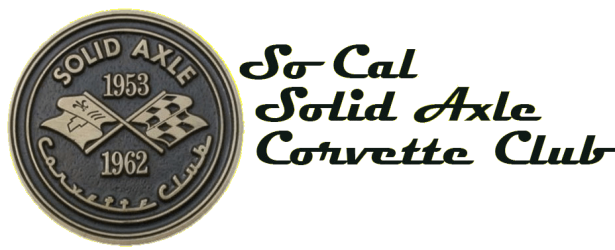Author: Eric Hershkowitz Member #
The Southern California Chapter of SACC tries to conduct two tech sessions per year, one each in the spring and fall. This Fall’s Tech Session was held at Kent Browning’s Auto Museum in Cerritos, California on Saturday, November 12. Two topics were presented: Detailing your collector car courtesy of Jaime Araya from Meguiar’s, and a question/answer session conducted by Jeff Reade of American Motoring Memories in Culver City, California. Fourteen solid axle Corvettes showed up and enjoyed VIP parking (Pic. #1, #2) and there were 65 members in attendance.
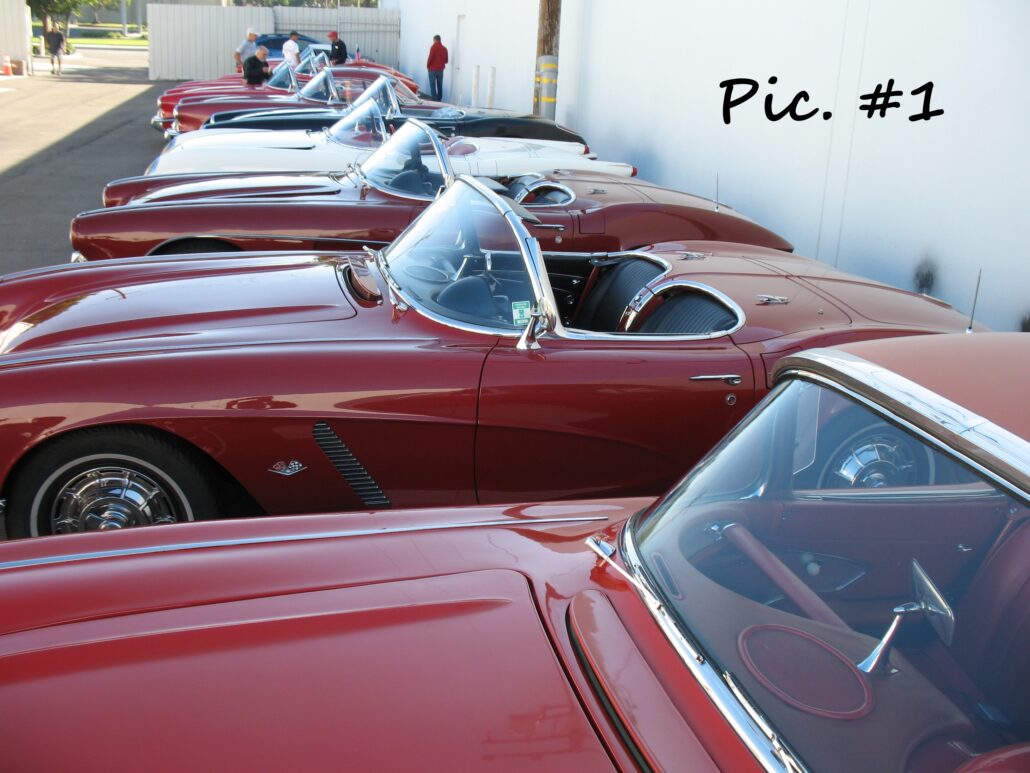
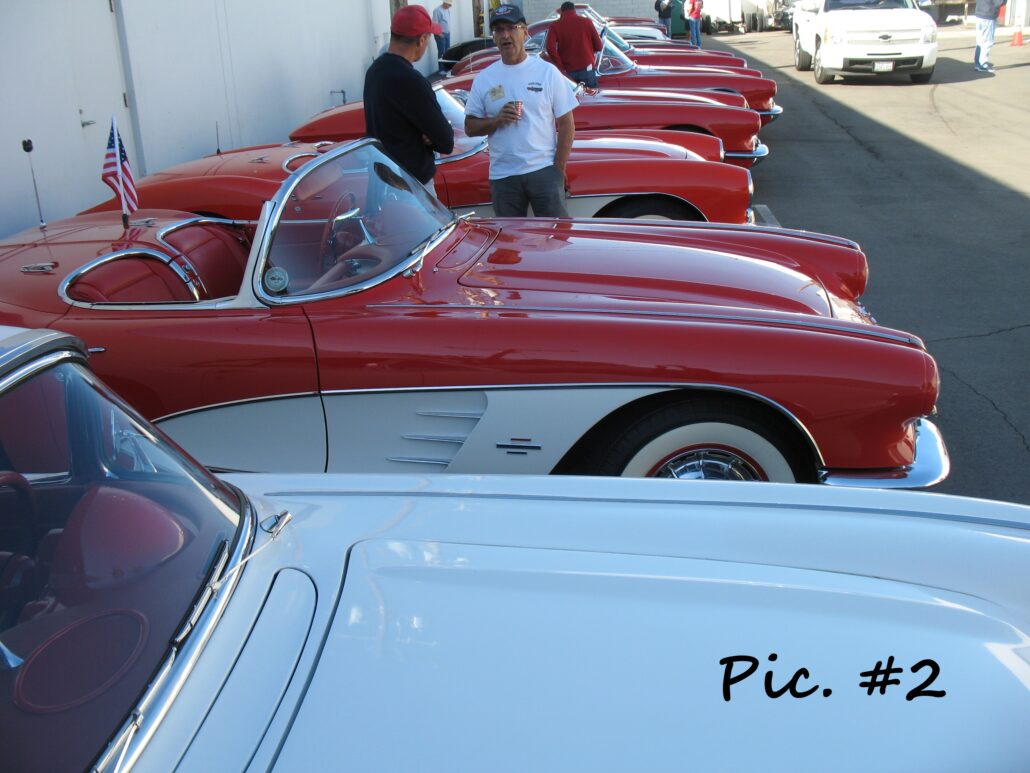
The venue, made possible by the generosity of SACC member, Kent Browning, is a fantastic place to meet and visit. There is plenty of space for lunch, accessibility and secure parking for our Corvettes and so many things to see that the museum really warrants a report of its own. However, I’ll try not to get off the topic too much! Just a few photos are attached to this report. (See pics #3-#7).
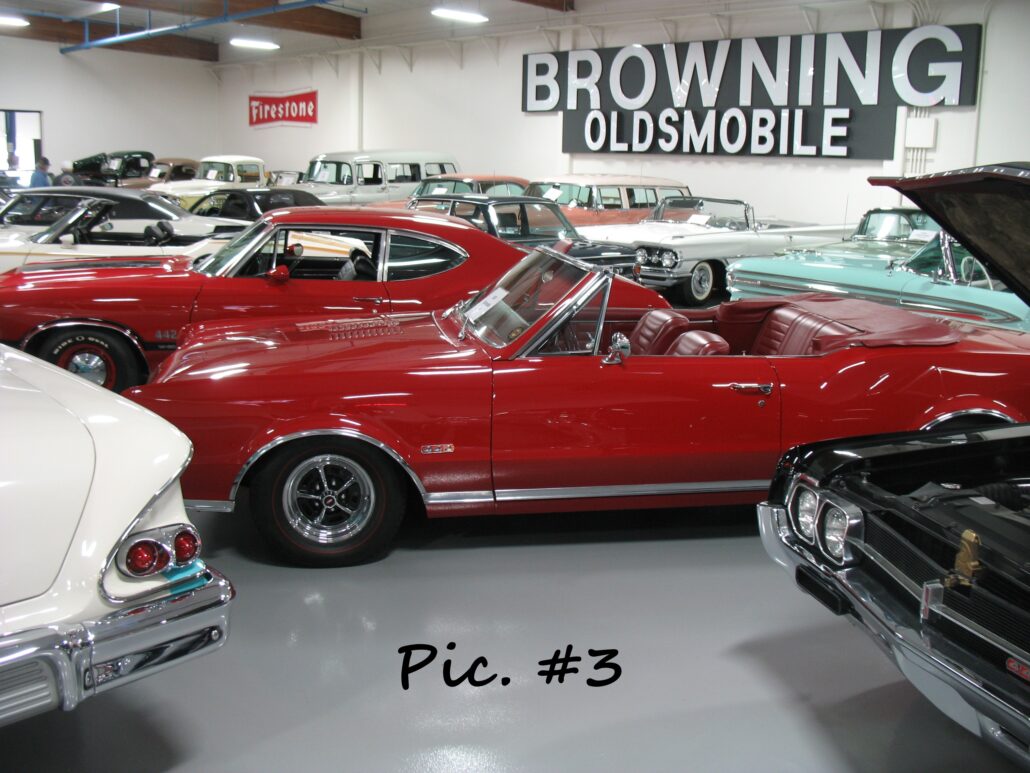
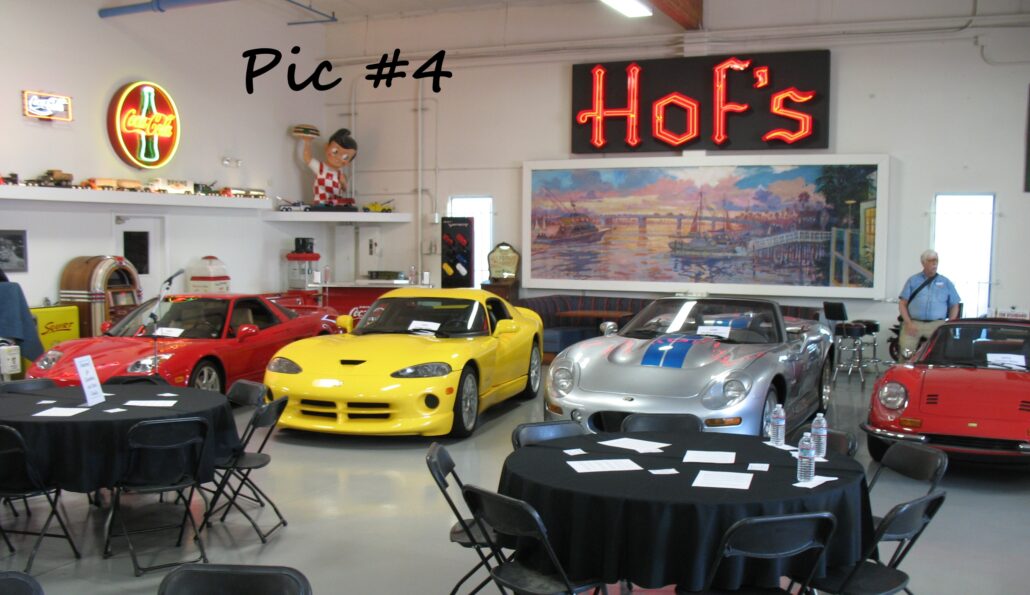
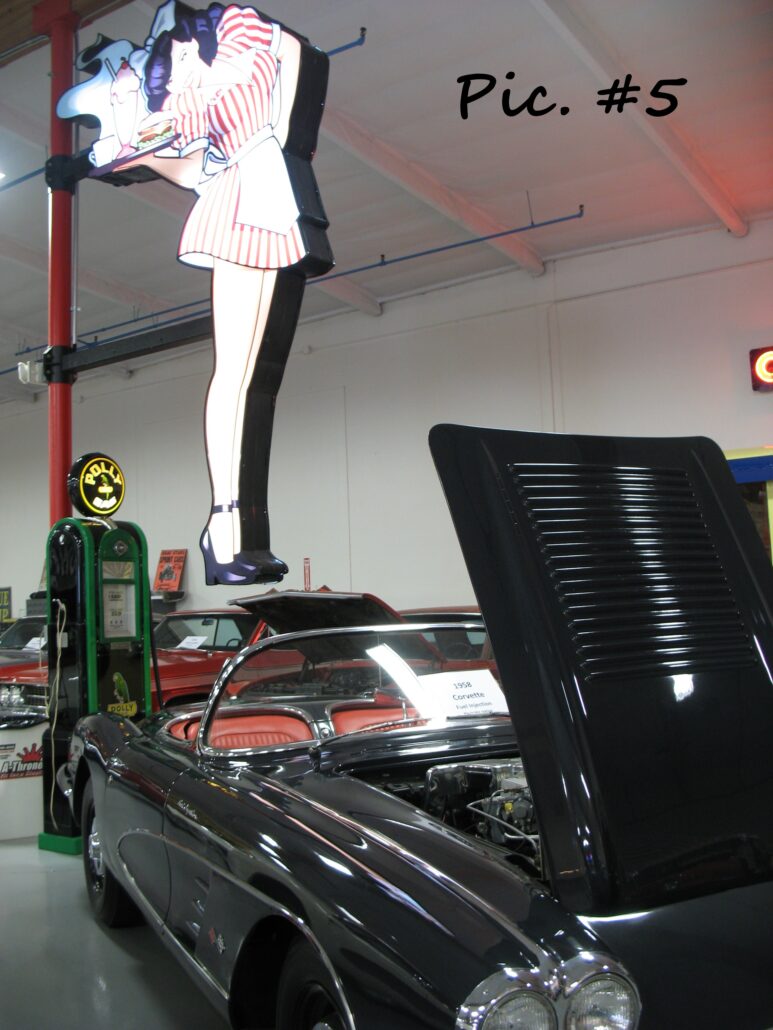
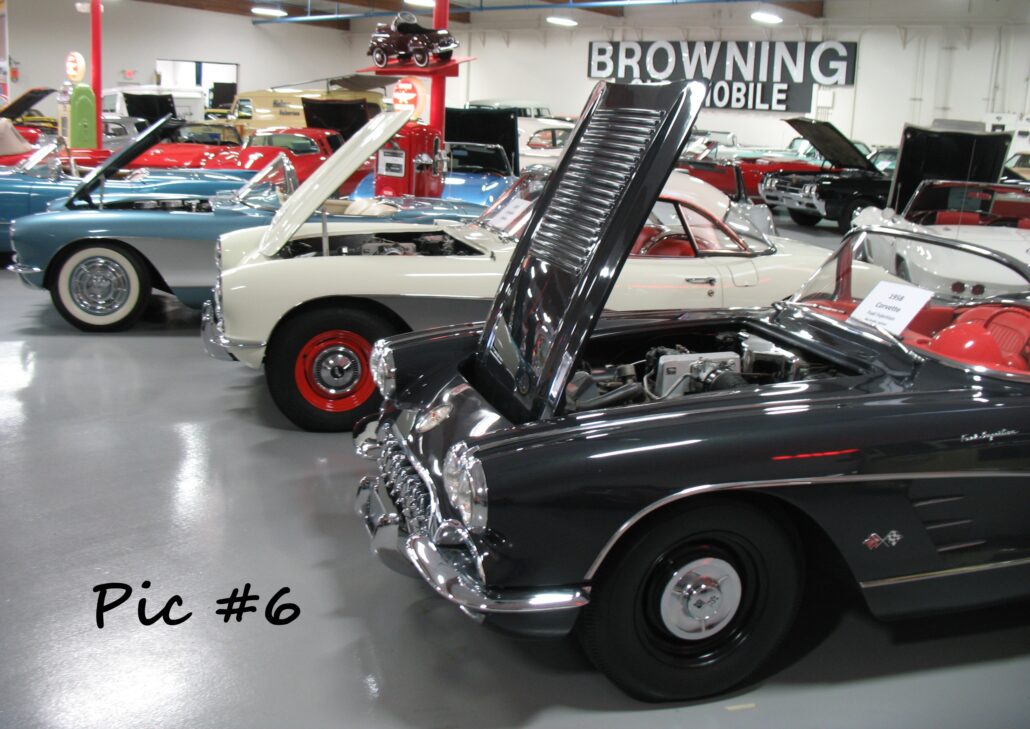
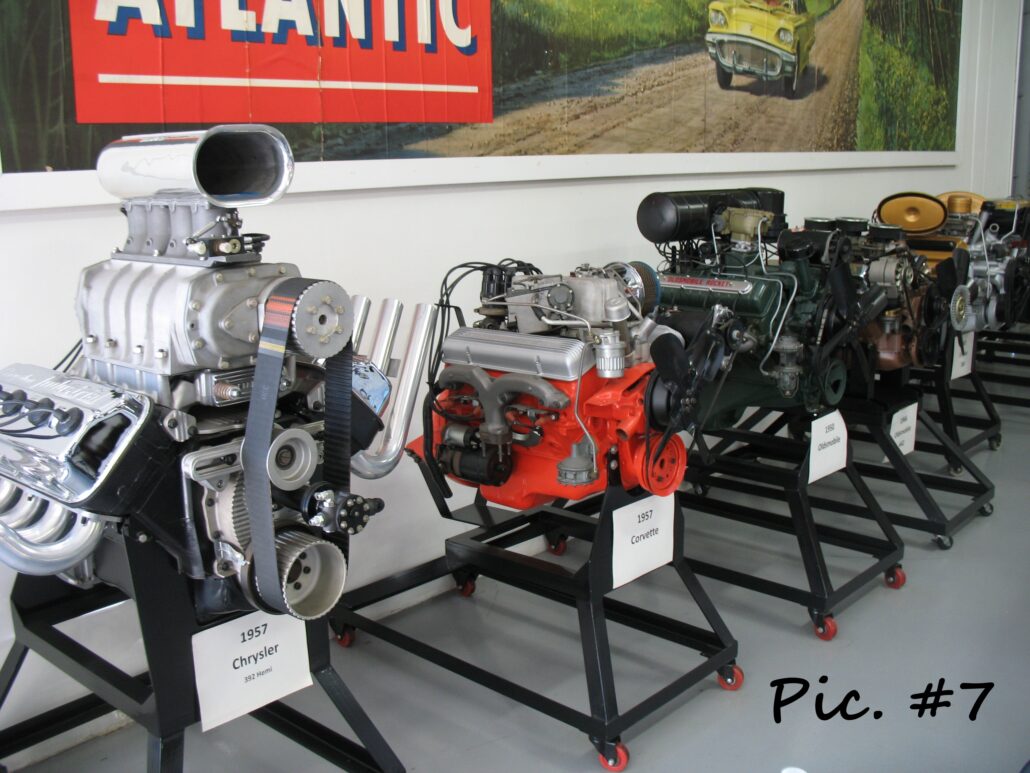
As you can see there are countless classic cars including Oldsmobiles, trucks, commercial vehicles, rare sports cars, racers and one Corvette from each year beginning in 1953 until 1967, each equipped with the most desirable options available. There are also vintage signs, gas pumps, vending machines, various automobilia and a whole room of vintage radios. The two buildings contain more than one can see in a day. We are extremely fortunate to have access to such an exciting place! We also appreciate how much assistance Tony Martinez provided to get the cars parked and the facility ready. I better get back to the report…
After a little socializing, tire kicking, catching up, coffee and muffins, (Pic. #8)
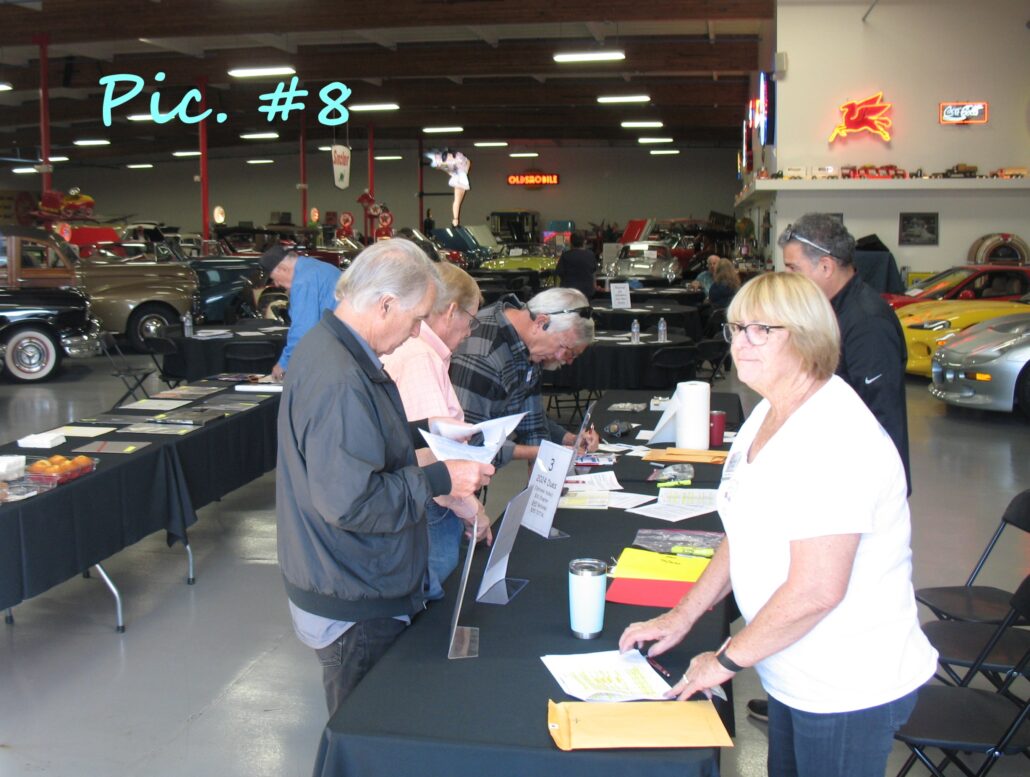
our representative from Meguiar’s, Jaime Araya, kicked things off about 10:00 am. Jaime has been a National Training Specialist and Application Engineer at Meguiar’s for twenty years and is well-versed regarding the products available as well as numerous detailing tips and even some of the features of competitor’s products. (Pic. #9)
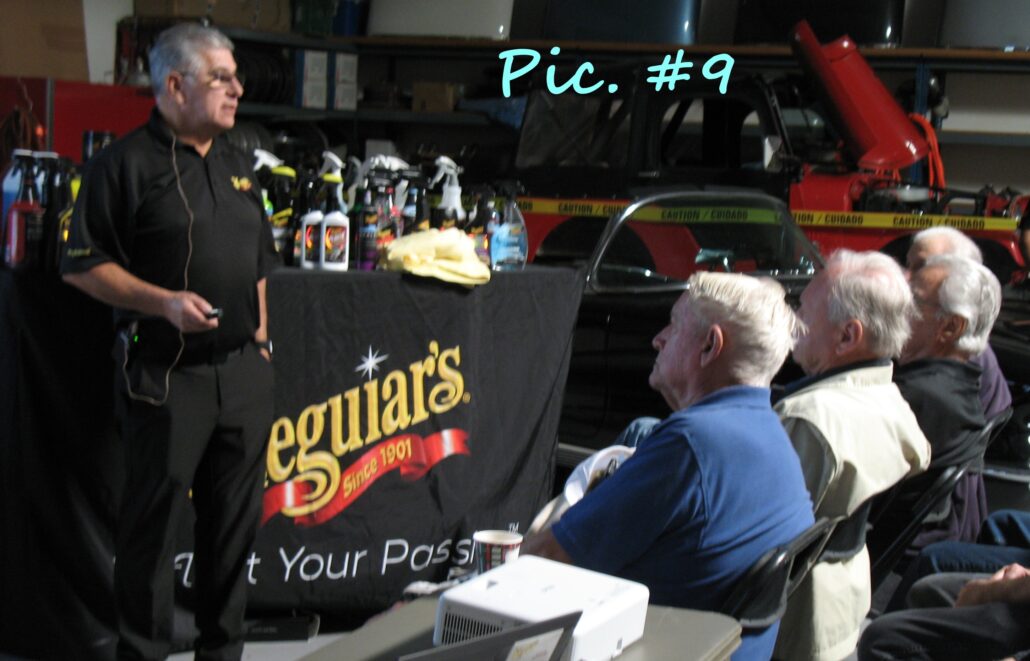
His presentation was very informative and entertaining at the same time. Jaime brought many of the products to display and a supplier, Ruben Garcia, had products available for purchase. SACC member Steve Clifford allowed Meguiar’s to use his black 1962 Corvette for a demonstration of what their products can accomplish. (Pic. #10)
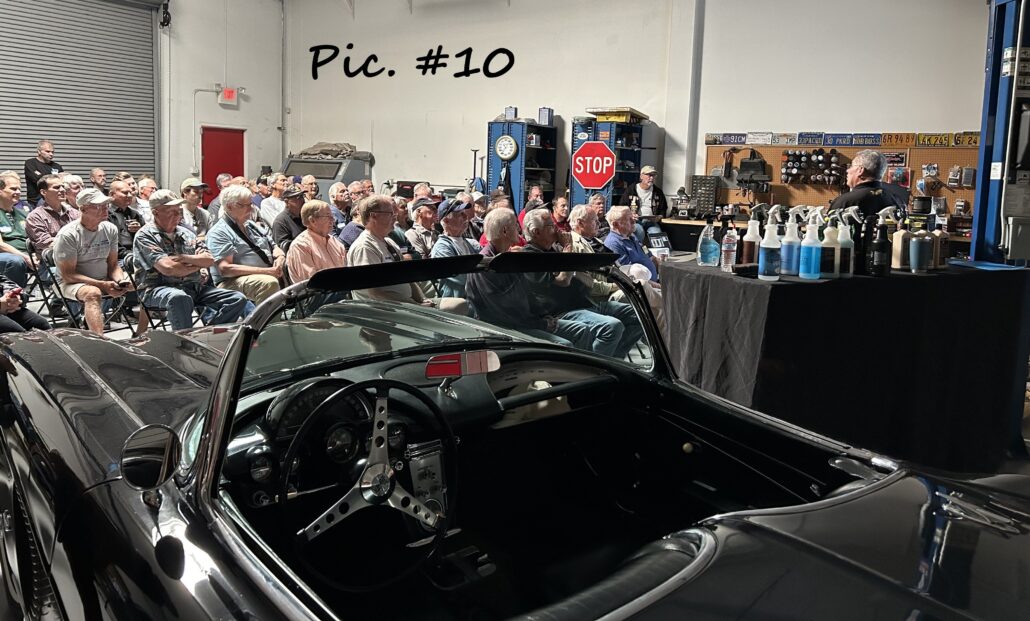
The week prior to our meeting, Steve took his ’62 to Meguiar’s where only the driver’s side of the car was completely detailed. The ‘62 was on display in our meeting room for inspection. It turned out so well that, now Steve is committed to completing the other half of the car!
Meguiar’s, headquartered in Irvine, California, has representatives who are willing to consult with you regarding any questions related to detailing your car, their products or even competitor’s products. They also offer free detailing classes approximately one Saturday per month.
Jaime had a lot of practical suggestions, advice and things to avoid when washing your collector car:
- Regarding microfiber towels. He highly recommends them but wants to remind us that they are made of a plastic fiber. (Pic. #11) Due to this fact, never wash them in hot water and certainly don’t heat dry. Heat melts the fibers and will cause them to scratch the car. Microfiber towels can be laundered many times, however, avoid fabric softener, bleach or any scented products. After washing, keep them in an enclosed container or they will attract dust. When wiping a dirty car with microfiber, wipe in one direction and fold the towel after each pass to avoid scratching the surface. Use detailer spray generously and when each fold of the towel has been used, launder it.
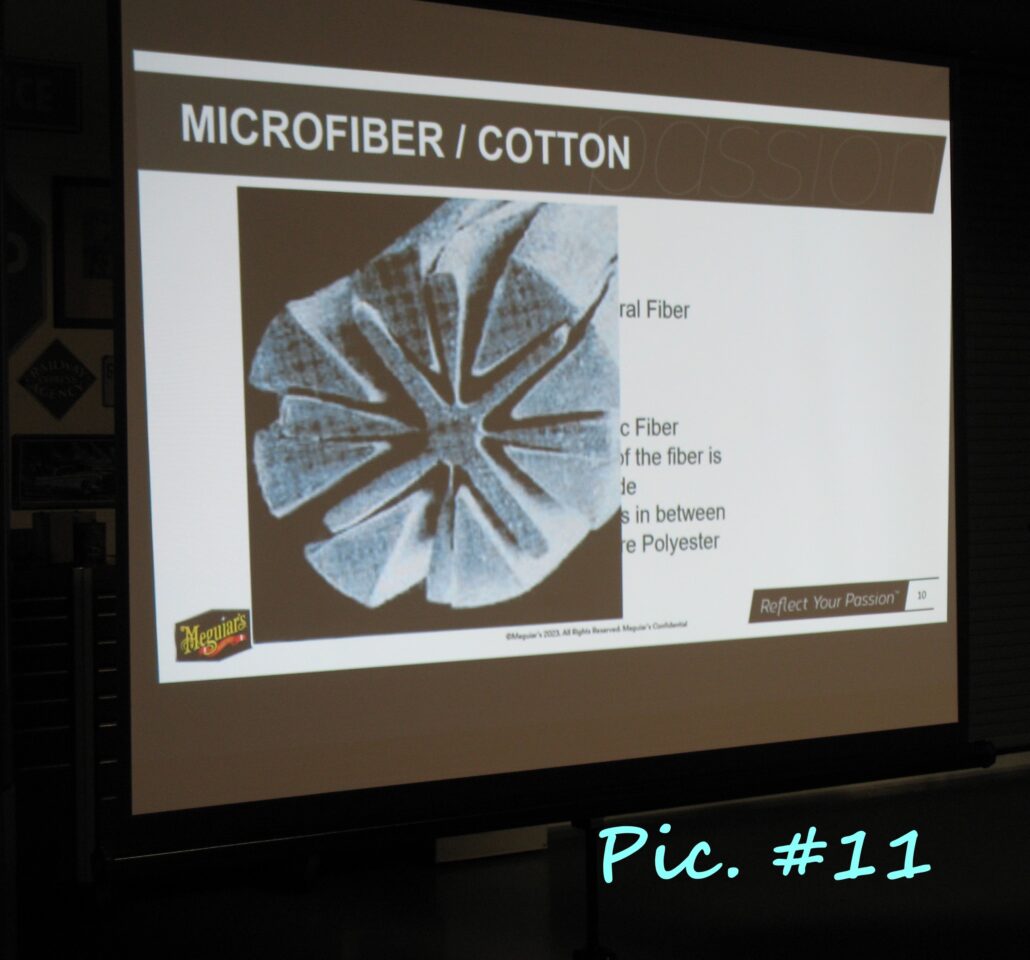
- Do not use car dusters. They are only clean once and after that they collect dust into the fibers and will scratch your paint. Rather, use a microfiber towel because you can wash it after each use.
- Do not dry with a Chamois, neither artificial nor natural. They pick up contaminants from the surface and drag them across the paint.
- When washing your vehicle use two buckets, one with soap and one with clean water. After soaping the car, each time rinse the wash mitt in the clear water to avoid scratching the paint by wiping dirt back onto the car. (Pic. #12) Wash from the top down.
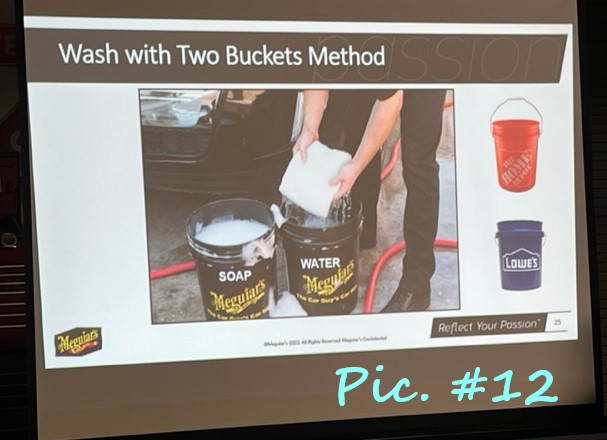
- When feeling the paint surface for smoothness (such as evaluating whether the car needs to be “clayed”), use a piece of cellophane under your hand. This increases detection sensitivity by five times.
- When cleaning glass, spray the towel, not the glass. Jaime demonstrated this on his van, after spraying tire dressing on the window. Spray glass cleaner generously on the towel so that it leaves the surface wet when wiped down. This removed the greasy film from his glass with ease.
Jaime explained the 5 steps of paint care (Pic. #13):
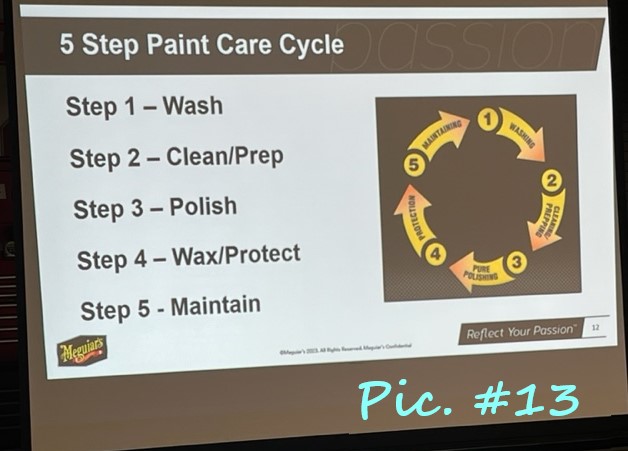
- Wash
- Clean and prep. This does remove a small amount of paint and should be done infrequently.
- Polish. This gives the paint it’s shine. Wax is not intended to accomplish this.
- Wax. This protects the paint to keep it looking new and repel water and contaminants. It should be done twice a year.
- Maintain. Frequent removal of contaminants before they bond to the paint. If done regularly (twice a week) you should not have to wash the car or repeat the first three steps.
Lunch break was about 12:30. A hearty lunch of brisket, rolls, salads and beans was provided by Lucille’s. (Pic. #14, #15)
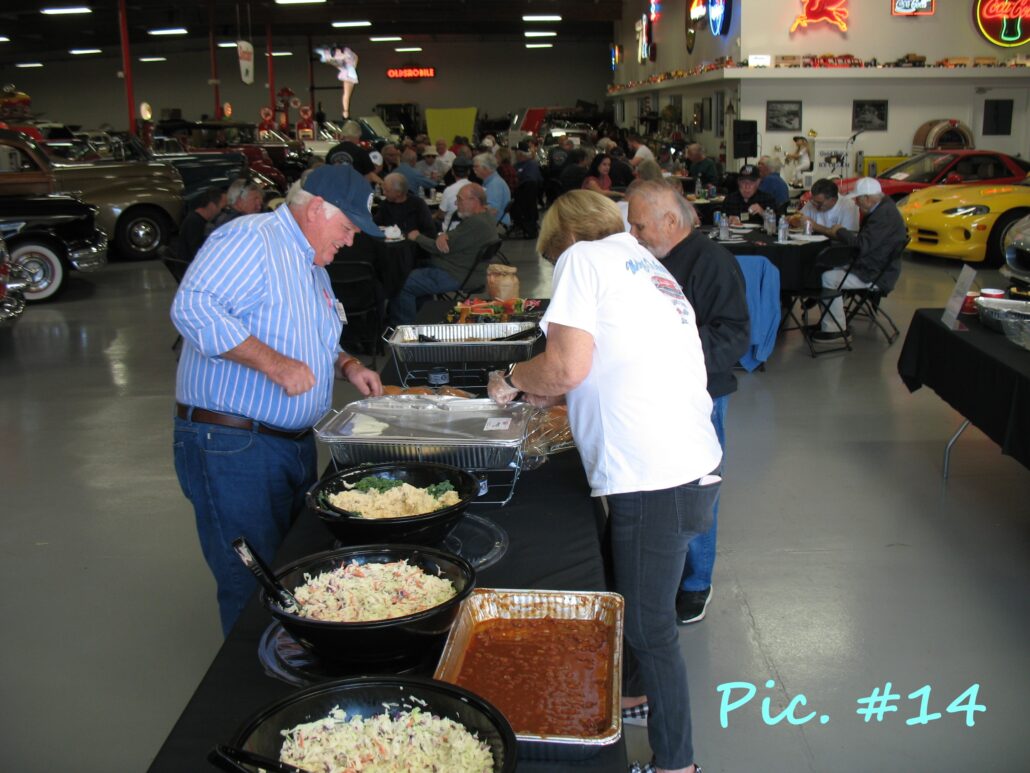
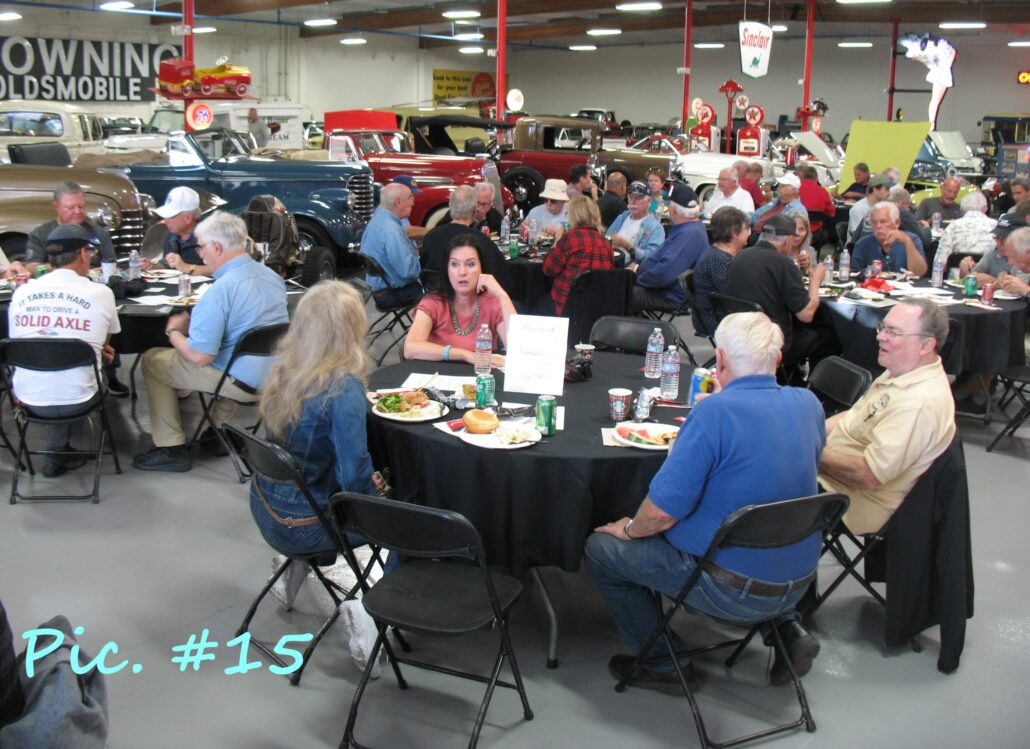
There were also ample beverages and cookies. You don’t know that I had three cookies.
During lunch there were two speakers. Joe Fikete showed us a meticulously restored (to original appearance in every detail) 1957 Wonderbar radio which he presented to Kent Browning. Nice to have industrious friends. Also, Yvonne Mechialis spoke to us regarding the mural which she painted on the back wall of Kent’s museum. (Pic. #16)
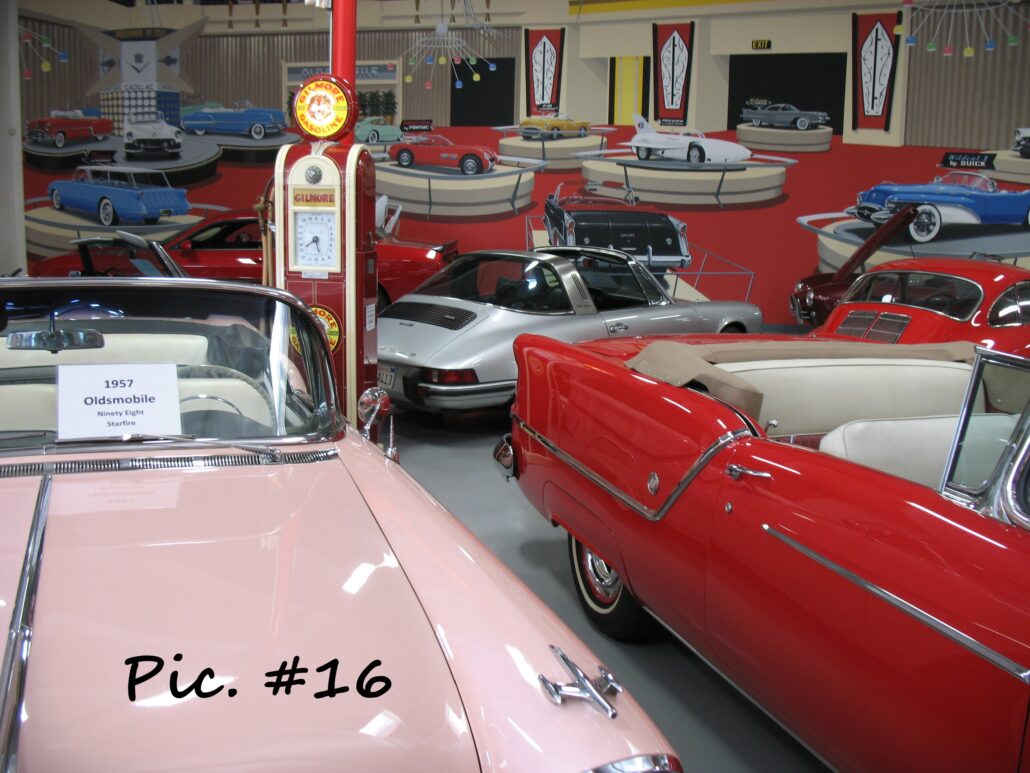
The painting took ten months to complete, and is beautiful. Yvonne has done work for Lion’s Dragstrip Museum and also does custom work on cars, bikes and boats.
After lunch, the afternoon session was presented by Jeff Reade, (Pic. #17)
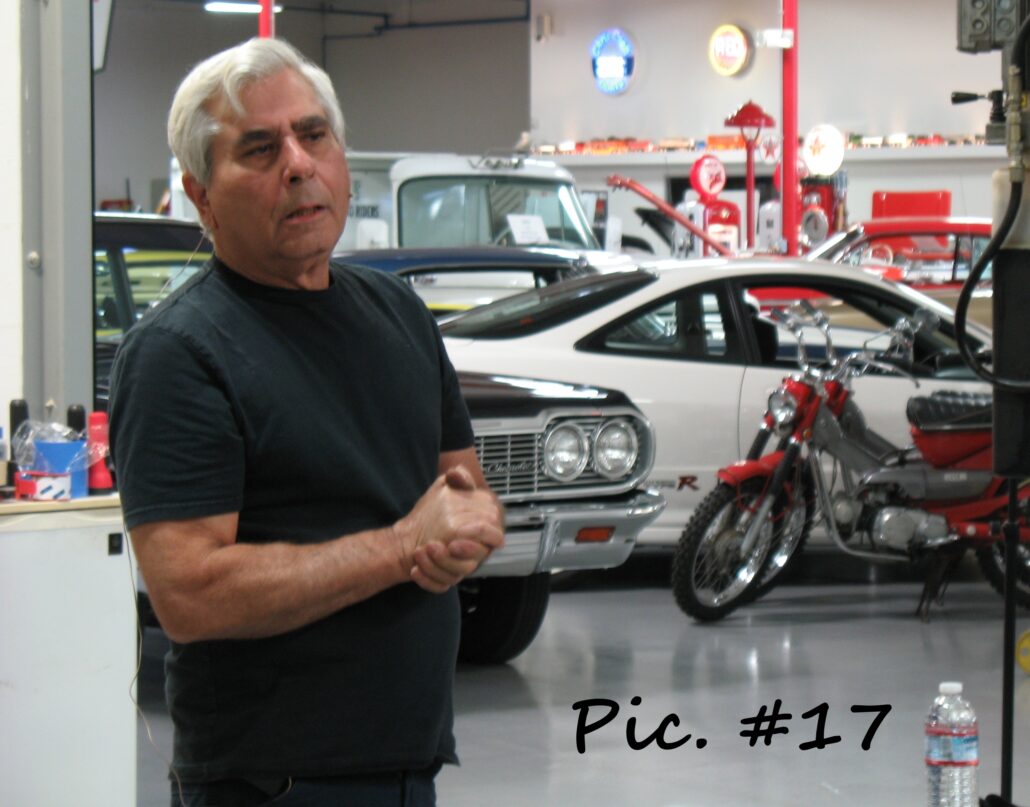
who has owned and worked on Corvettes since he was just a young boy. I think he still is. Jeff is a walking encyclopedia of knowledge regarding our Corvettes. Well, since there are no more encyclopedias, maybe he’s a walking internet. In any case, he is extremely knowledgeable on any subject and is very direct and to the point with his advice. Again, we are very fortunate to have access to such capable experts as Jeff, who has always been eager to help any of us with the problems we might run into. I always learn something from Jeff Reade. Members were asked to submit questions prior to the Tech Session, so that Jeff could prepare his answers and bring some sample parts to share. Here are just of a few of his sage words of advice:
- The Lectric Limited wiring diagram depicts an error. The red wire which goes to the ammeter should go on the passenger side, not the driver’s side as the diagram suggests.
- Starting a car that has been sitting for an extended period, should be safe up to about one year. At that time the oil pump should be primed. To do this you will need a distributor body and drive shaft without the drive gear. The distributor body blocks the upper oil passages in order to pressurize the system. You will not develop oil pressure if you try to do this with just a drive shaft.
- In tuning a fuel-injected Corvette, advance the timing a little more than a carbureted model.
- When re-starting an FI car that has been sitting, be aware that fuel may have trickled down into the cylinders, if you don’t have a shut off solenoid. Upon a momentary turn of the starter, if you feel a resistance, do not try to start the car as the fluid in the cylinder will not compress and could bend a rod, ruining your engine. Also check for fuel leaks, especially at the seal on the high-pressure fuel pump.
- Common causes of overheating:
- Clogged engine block or radiator
- Not enough piston/bore clearance! Very common as recommendations from manufacturers or manuals may not be correct.
- Timing
- Thermostat, rarely is at fault. Jeff recommends a Delco/Remy 170-degree thermostat which is still available
- Water pump
- Plugged exhaust system. Check that your heat riser is opening
- Too lean A/F mixture
- Rear end ratio too high for desired highway speed
- Jeff went into great detail as to the reasons why our side windows may be difficult to roll up. The rear window track felt lining provided by the vendors is too thick. The stainless bead on the window side felts (fuzzies) should sit on top and outside of the stainless garnish strip, not within it because there is not enough clearance. The curved part of these is also too wide and Jeff showed us how to flatten them with a trim hammer.
- Regarding clutches: Some pressure plates will allow the clutch cross shaft to go “over-center” dropping the clutch pedal to the floor. (Pic. #18) Jeff recommends the Centerforce 2 clutch. I agree…have one. Also, adjusting the slotted spring bracket on the cross shaft to the most rearward position should help.
- The 3M spray adhesive that many of us have used, is no longer very good due to California VOC restrictions. You didn’t hear me say to buy it from out of state.
- Don’t use 90W gear oil in your steering box, rather grease, to avoid leaks.
- Avoid the white Lithium grease that comes in cans. In years it will dry up and turn hard. I concur, as I have removed a lot of this old, hard junk, especially from window tracks and gears.
- Tail lights need to be grounded. The sockets are grounded to the housings and any corrosion here may interfere with you tail lights working properly. This is the first place to check if you have any issues with your tail lights not working properly.
- The reproduction exhaust systems sold by some vendors may not fit well. Expect to seek assistance from a muffler shop to cut, bend and adapt.
- Avoid polishing your stainless-steel hubcaps, as it may result in them exhibiting a yellow or golden hue.
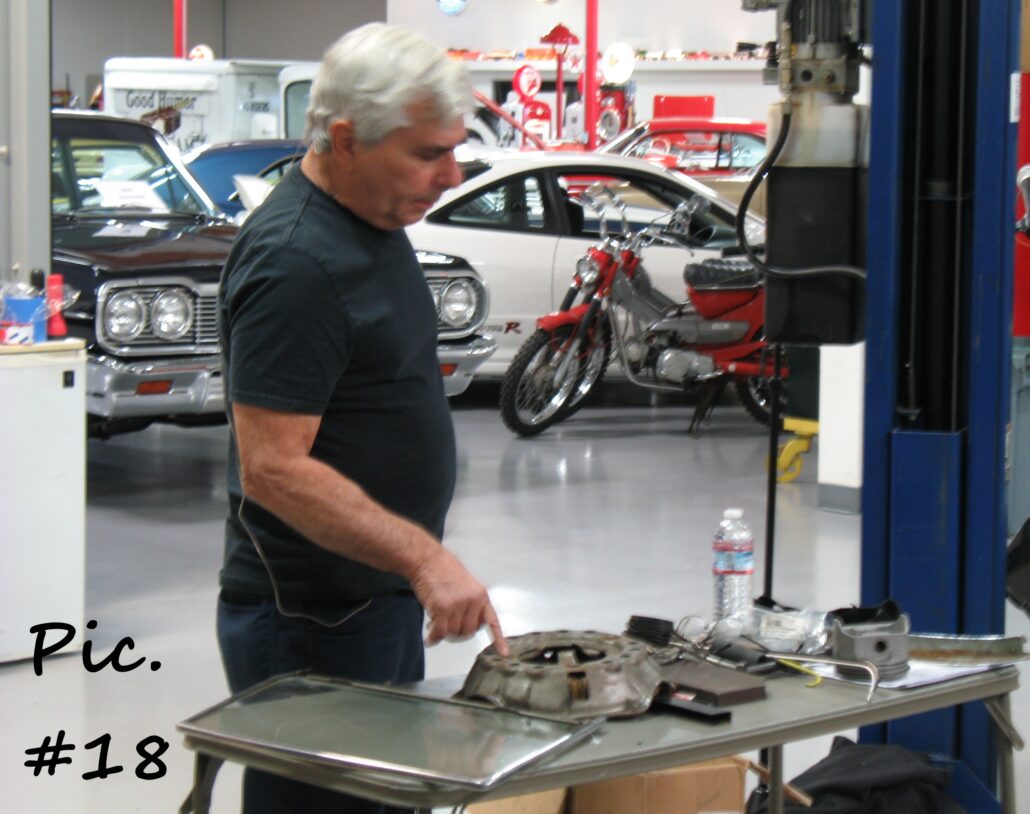
If you are in the Southern California area and are interested in joining SoCalSACC or attending our next tech session, feel free to contact us. Our website is: socalsacc.com. The spring tech session is scheduled for Saturday, April 20 at Lion’s Dragstrip Museum in Rancho Dominguez, California. In addition to the appreciation expressed above to those who contributed to the success of our event, I would like to recognize both Chuck Gibney and Rick Dufresne. Both gentlemen went above and beyond to assure that we could all enjoy such a pleasant and informative day and have stepped up while we look for someone to officially serve in the role of tech advisor. If you can assist in this capacity, please contact a board member. In addition, we are in dire need of an e-newsletter editor. If you are relatively adept at on-line composition the Club could really use your help. The framework is already in place, we just need someone to take the reins. SoCalSACC, like many clubs, is really short on manpower to organize events such as road tours and tech sessions. Our very small board is not capable of undertaking all of the tasks required to present the events which our members so enjoy, however, we really want to keep moving forward with activities and keep the Club viable. Please contact the board if you can help out!
